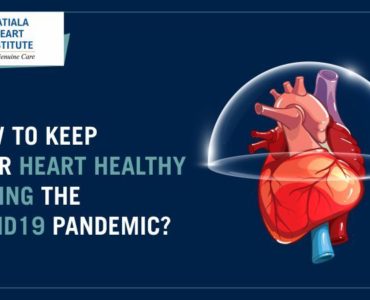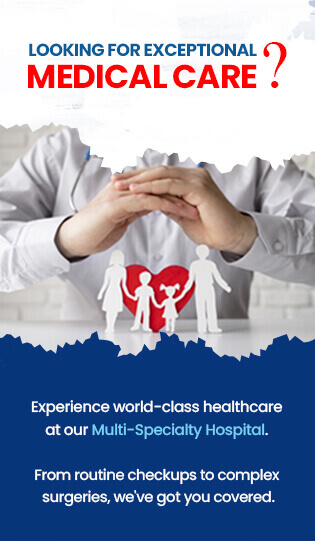Cardiac emergencies pose a significant risk in all environments, including the workplace. Being prepared for such critical situations is paramount, as it can mean the difference between life and death. This guide aims to highlight the importance of cardiac emergency preparedness in the workplace and provide a comprehensive overview of its purpose and content.
Importance of Cardiac Emergency Preparedness in the Workplace
The workplace is a setting where individuals spend a substantial amount of their time. Given the unpredictability of cardiac events, ensuring preparedness for such emergencies is crucial. Heart-related issues, such as cardiac arrest and heart attacks, can occur suddenly and without warning, affecting employees, colleagues, or even visitors. So you might need an emergency heart care expert or some basic training for your staff.
Timely Response Saves Lives:
Quick and effective action during a cardiac emergency significantly increases the chances of survival. Having trained personnel and accessible emergency equipment like Automated External Defibrillators (AEDs) can be pivotal in administering life-saving care before medical help arrives.
Employee Health and Well-being:
Prioritizing cardiac emergency preparedness demonstrates a commitment to the health and safety of employees. It creates a secure environment, instilling confidence among workers that their workplace values their well-being and is equipped to handle unforeseen health crises.
Legal and Moral Obligations:
Various workplace safety regulations and guidelines mandate the provision of adequate emergency response systems, including protocols for cardiac events. Failure to meet these standards not only poses legal liabilities but also breaches the ethical responsibility of ensuring a safe working environment for all.
Reduced Impact on Operations:
An effective response plan minimizes the disruption caused by emergencies. Having trained staff and accessible equipment helps swiftly address cardiac incidents, potentially reducing downtime and the impact on productivity.
Understanding Cardiac Emergencies
Explanation of Cardiac Conditions and Their Impact
Cardiac emergencies encompass a range of conditions affecting the heart, often with sudden and severe implications. These conditions primarily involve the heart’s inability to function correctly, leading to a disruption in blood flow to vital organs. Some significant cardiac emergencies include:
Cardiac Arrest: This occurs when the heart suddenly stops beating, disrupting blood flow to the body. It’s a life-threatening emergency requiring immediate intervention. Without prompt treatment like CPR and defibrillation, it can be fatal within minutes.
Heart Attack (Myocardial Infarction): A heart attack results from a blockage in the blood vessels supplying the heart muscle. It leads to the death of heart tissue due to a lack of oxygen. Common symptoms include chest pain or discomfort, shortness of breath, nausea, and cold sweats.
Arrhythmias: These are irregular heartbeats that can cause the heart to beat too fast, too slow, or erratically. Severe arrhythmias can be life-threatening and may lead to cardiac arrest.
Common Signs and Symptoms of a Cardiac Emergency
Recognizing the signs and symptoms of a cardiac emergency is crucial for timely intervention. Some common indicators include:
- Chest Discomfort or Pain: Often described as pressure, tightness, or squeezing in the chest. It may radiate to the arms, back, neck, jaw, or stomach.
- Shortness of Breath: Difficulty breathing or sudden onset of breathlessness, especially when not exerting oneself.
- Palpitations or Irregular Heartbeat: Sensation of a racing, fluttering, or pounding heart.
- Dizziness or Lightheadedness: Feeling faint, dizzy, or experiencing sudden weakness.
- Nausea, Indigestion, or Vomiting: Unexplained stomach discomfort or vomiting, sometimes mistaken for digestive issues.
- Cold Sweats: Profuse sweating, often accompanied by a sense of impending doom.
Creating a Cardiac Emergency Response Plan
A cardiac emergency response plan is vital in ensuring a swift and effective reaction to critical situations in the workplace. This plan encompasses various crucial elements, from establishing emergency teams to regular training and practice sessions.
Establishing an Emergency Response Team
Forming a dedicated emergency response team is the cornerstone of a cardiac emergency plan. This team typically comprises individuals trained to handle medical emergencies swiftly and competently. Key steps in establishing this team include:
- Identification: Selecting individuals with an interest in emergency response, ensuring representation from different departments or shifts.
- Training: Providing specialized training in basic life support, CPR, and AED usage to equip team members with necessary skills.
- Roles and Designations: Appointing team leaders, responders, and support members, clearly defining their roles and responsibilities during emergencies.
- Accessibility: Ensuring the team is easily reachable and identifiable in the workplace, with contact information prominently displayed.
- Defining Roles and Responsibilities within the Team
Clarity in roles and responsibilities is crucial for an effective response. Key duties within the emergency response team may include:
- Team Leader: Overseeing the emergency response and coordinating efforts among team members.
- First Responders: Trained individuals ready to perform CPR, operate AEDs, and provide initial medical assistance.
- Communicators: Responsible for alerting emergency services, contacting designated authorities, and ensuring clear communication within the team.
- Support Staff: Assisting responders, managing onlookers, and facilitating access to emergency equipment and resources.
Training Employees in CPR and AED Usage
Extending beyond the emergency response team, providing CPR and AED training to a broader employee base significantly enhances the workplace’s readiness to handle cardiac emergencies. Key steps involve:
- Comprehensive Training: Conduct regular training sessions on CPR techniques and AED usage for employees, ensuring they feel confident and capable.
- Accessibility of Training Materials: Making educational resources and guides readily available to refresh knowledge and skills.
- Certification Programs: Encouraging employees to undergo formal certification courses in CPR and AED, promoting greater competence and confidence.
Conducting Regular Drills and Simulations for Emergency Scenarios
Practice makes perfect, and regular drills and simulations play a pivotal role in maintaining preparedness. Steps to conduct effective drills include:
- Scheduled Exercises: Planning and conducting periodic emergency response drills simulating various cardiac emergency scenarios.
- Realistic Scenarios: Designing scenarios that mimic real-life situations to familiarize team members and employees with the actual response process.
- Evaluation and Feedback: Assessing the response, identifying areas for improvement, and providing constructive feedback to enhance preparedness.
Equipping the Workplace for Cardiac Emergencies
Effective preparation for cardiac emergencies in the workplace goes beyond having trained responders—it involves strategic placement of equipment, clear communication, and accessibility to crucial resources.
Placement and Accessibility of AEDs Throughout the Premises
Automated External Defibrillators (AEDs) are indispensable in managing cardiac emergencies. Their strategic placement and easy accessibility are paramount:
- Strategic Placement: AEDs should be strategically positioned in easily accessible locations across the workplace, considering high-traffic areas and proximity to potential cardiac emergency sites.
- Accessibility: Ensure that AEDs are readily available round-the-clock, avoiding locked cabinets or areas that impede quick access during emergencies.
Ensuring Visibility and Clear Instructions for AED Locations
Visibility and clear guidance on AED locations are pivotal for quick identification and use:
- Clear Signage: Clearly visible and prominent signage indicating the presence and location of AEDs should be displayed throughout the workplace.
- Instructions: Placards or posters near AEDs providing simple, step-by-step instructions for usage, along with illustrations, can empower individuals to operate the device confidently during emergencies.
Stocking First-Aid Kits with Relevant Emergency Supplies
First-aid kits serve as immediate aids not only for cardiac emergencies but also for various other medical needs. It’s essential to:
- Regular Inspection: Regularly check and restock first-aid kits to ensure they are equipped with necessary supplies, including bandages, gloves, scissors, and non-prescription medications.
- Additional AED Supplies: Consider storing additional AED pads and batteries alongside first-aid kits to facilitate immediate replacement if needed.
Providing Information on Emergency Contact Numbers and Procedures
Access to emergency contact information and clear procedures enhances preparedness:
- Contact Information: Display emergency contact numbers, including local emergency services, medical facilities, and workplace response team members, prominently across the workplace.
- Emergency Procedures: Make easily accessible and understandable guidelines outlining the steps to follow in the event of a cardiac emergency, including whom to contact and the chain of response.
Conclusion
The commitment to cardiac health and emergency readiness should be an ongoing priority for workplaces. Continual education, regular equipment maintenance, updated training, and fostering a culture that prioritizes health and safety are vital.
Encouraging employees to adopt heart-healthy habits and regularly participate in educational programs sustains a workplace environment that is vigilant, proactive, and prepared to handle cardiac emergencies effectively. The dedication to cardiac health not only safeguards employees but also fosters a supportive and resilient workplace community.
Still, in case you are looking for a Cardiac crisis specialist or the best cardiologist in Patiala, you can schedule a consultation at Patiala Heart Institute & Multispecialty Hospital.







